Dronme Davis is, among other things, a model, scouted via Instagram only a year ago. ‘I remember my first ever job. It was this big campaign in LA where there’s 40 people and everyone was a size 0. I was the fat Black girl- that was the role I was filling. I was wearing these skin tight prom dresses – all size six (UK size 10) – that were cut open on the back because none of the clothes fitted me. It was an ordeal.’ Davis is a UK size 16, currently the average dress size for women in this country. Sadly, her experience is not rare – in fact, it has been normalised. Saffi Karina, a British model who has starred in global campaigns for H&M and walked the runway at New York Fashion Week, tells of similar experiences – she was even dropped from her first modelling agency for being ‘too curvy’. ‘I had boobs and hips - it doesn’t matter how often you go to the gym- that genetically is my body shape.’
With fashion currently categorising ‘plus size’models as anyone of a size 12 and above – the industry differentiates between ‘curve’ sizes and ‘straight’ sizes (i.e any size up to a size 10) – a dangerous precedent has been set. This may not come as a revelation but it is startling that progress remains slow, despite years of media attention and many brands making commitments to do better. According to data from PwC, the ‘plus size’ market is forecast to make up 22% of the entire UK fashion market by 2022, growing at a significantly faster rate than the rest of the fashion industry. So, why, in 2021, is the majority of women still, at best, woefully underserved and at worst blatantly excluded?
The advent of ready-to-wear clothing can be traced back to the early 20th century, which, unsurprisingly, coincides with the emergence of anxieties about weight and diet in society. With increased demand for affordable, stylish clothes for women in the years following the First World War, companies introduced standardised sizing as a way to increase quantities and, therefore, profit. It wasn’t until 1966 when ready-to-wear became the entity as we know it today, when Yves Saint Laurent was the first designer to diversify from couture, launching his ready-to-wear collection Rive Gauche. Since then, every other fashion house has followed suit and we’ve witnessed the landscape change immeasurably, especially since the introduction of more affordable fast fashion brands. One thing has remained, however: the sizing standards.
Donatella says the choice to include ‘plus size’ models in Versace’s world was a very conscious one. ‘If, as we say, fashion is the mirror of society, then something had to change in the way we represent people.'
While each decade since has ushered in a new body ‘ideal’ – the super slim, athletic women of the 70s, the Amazonians of the 80s, the 90s’ waifs and the even slimmer frames of the early noughties – one thing these bodies all had in common is that they could fit into the smallest sizes. As Joan Jacobs Brumberg writes inThe Body Project, ‘With store-bought clothes, the body had to fit instantaneously into standard sizes that were constructed from a pattern representing a norm. When clothing failed to fit… young women were apt to perceive that there was something wrong with their bodies.’
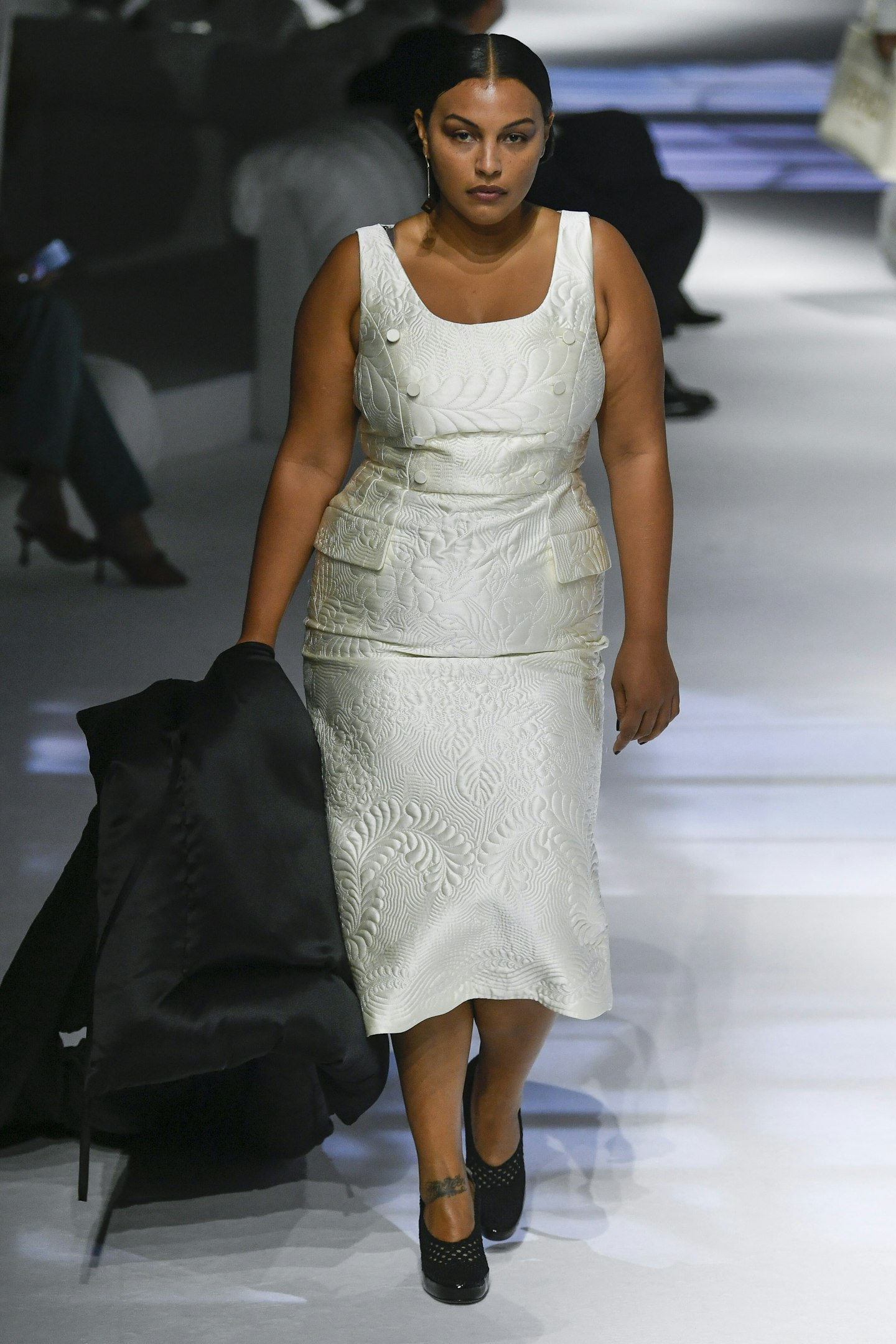
There has, of course, been some positive progress in the last few years. Thanks to a growing chorus of voices within the industry, size is firmly on the agenda, with social media only helping to amplify this conversation. We’ve seen models like Ashley Graham, Paloma Elsesser, Precious Lee and Tess McMillan secure campaigns and catwalk appearances for the likes of Versace, Fendi and Alexander McQueen. Piergiorgio Del Moro, the casting director who worked with both Versace and Fendi to create their most diverse catwalks yet in terms of body shape and size were, he says, the product of an ‘open and ongoing conversation for a long time between myself and my team, the designers, and the shows’ stylists.’ Del Moro cites the expansion of model agencies as one of the reasons why this has been possible: ‘Casting will always be a reflection of the conversations taking place within society. As more model agencies started to open plus size divisions, there was more opportunity to suggest body diverse models for editorial projects and then subsequently, this inclusion got to the runway.’
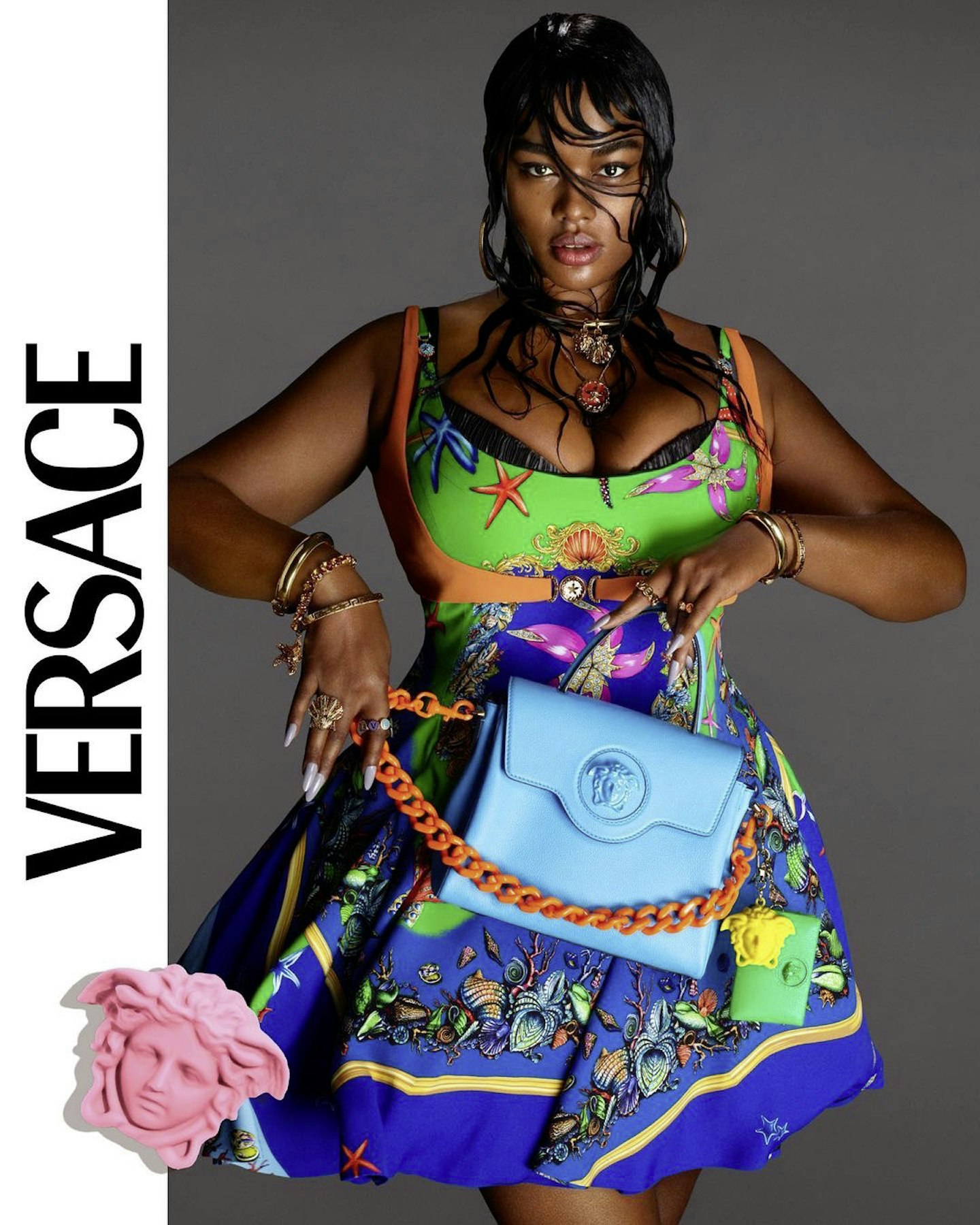
And not just the runway. Precious Lee has made history as the first ‘curve’ model to front a Versace campaign, appearing as one of the brand’s ‘Medusas’ for spring/summer 2021, alongside Kendall Jenner and Hailey Bieber. As Donatella herself says, the choice to include ‘plus size’ models in Versace’s world was a very conscious one. ‘Our fashion shows were kind of old school in terms of casting. If, as we say, fashion is the mirror of society, then something had to change in the way we represent people. Diversity has never been something I was afraid of, if anything, quite the contrary.’
Erdem, too, recently announced that he will introduce inclusive sizing from a 6 to a 22. ‘I began to realise there was a need for more inclusive sizing through my bespoke clients,’ says Erdem. ‘I originally sold up to a 16, then 18 and, once I realised there was a desire from our clients for more sizes, I started the process.’ Designers like Diane von Furstenberg and Christopher Kane, meanwhile, have partnered with 11 Honoréto ensure they’re able to offer larger sizes.
.jpg?auto=format&w=1440&q=80)
Founded by Patrick Herning in 2017, it’s an online boutique which has carved out a space for women in the luxury environment where, historically, they’ve been excluded. Having worked in fashion marketing, Herning recruited friends in the industry to help him build this platform, which also offers pieces from the likes of Ganni, Mary Katrantzou and Carolina Herrera, all available in sizes 12-24 (or UK 16-28). ‘We’re really giving designers the tools now to get it right,’ says Herning. He and his team have developed their own fit tools (called patterns and blocks in the industry), which are then offered to designers who don’t have the capacity or budget to do this themselves. ‘If somebody wants to get into [plus sizes] and their feeling is ‘oh we can’t do all of this’, we can help you.’
It seems that addressing the building blocks of the clothes themselves is integral to creating positive change. Alexandra Waldman is one of the co-founders of Universal Standard, a US-based mid-market label that has revolutionised the very idea of fit. Having launched in 2015, Waldman and her co-founder Polina Veksler set about devising an entirely new way of making and fitting clothes, ensuring they would work for all sizes, from 00-40 (UK 2-44). ‘I dubbed it micrograding,’ says Waldman, ‘And this is all from personal experience. I’ve lived in the bigger body all my entire adult life and so I know what’s out there and what’s missing. Our system means that between each size, we take a separate approach rather than using a formula to go from double zero to size 40 because at that rate, a mini skirt would become a wedding gown by the time you get to the larger sizes. We make sure every size looks like it’s native to the body it’s being worn by.’
'Women are incredible in all shapes and sizes and yet the overwhelming image that fashion presents is tall, slim and young - an impossible ideal for the majority of people, so why do we do it?'
As a result, Universal Standard now offers the largest commercially available size range in the world, where clothes on the website can be seen on models of all sizes. It’s hardly surprising, then, that brands such as Adidas, J Crew and Rodarte – with whom Universal Standard produced a sell-out collaboration last year – are desperate to work with them. ‘We’ve done this because we don’t want to talk about size; ironically that’s all people want to talk about but we make every size because we don’t care what size you are. This is not a brand about body positivity – we believe that’s a very personal thing. We just want to make sure that everyone has access to great clothing and we hope we can influence the industry to join us.’
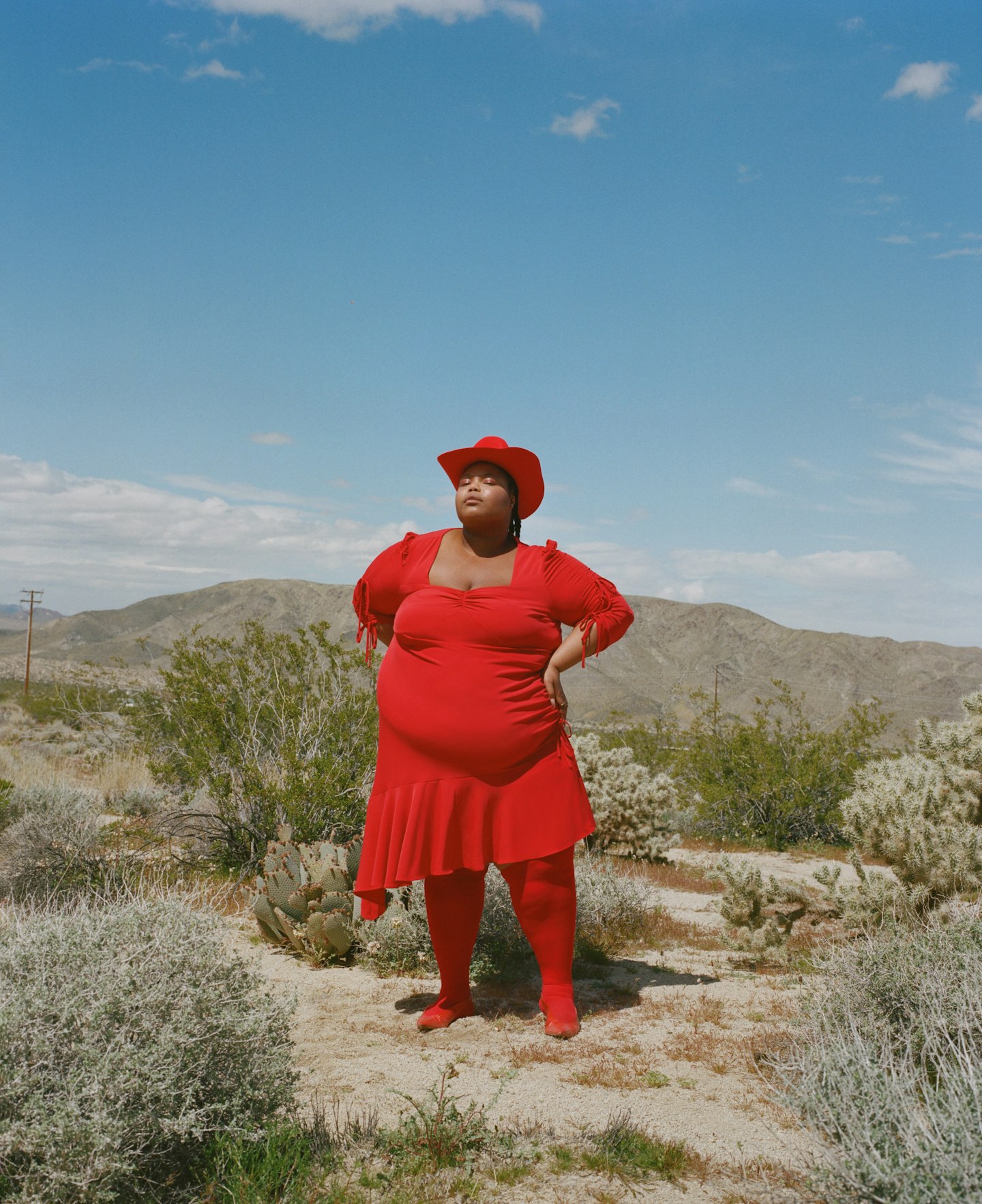
But join them it hasn’t. With clothing still largely manufactured in a way that requires the body to fit to it, it’s no surprise that a survey of over 300 Grazia readers revealed that 75% of women have struggled to find the right size in stores and while online shopping, while fewer than half agreed that they can always find a size that fits their body shape. This may be one of the reasons that an Instagram post from Fran Burns, a leading fashion stylist, provoked a huge response in September of last year. The image was of a very slim model wearing a pair of trousers that were clearly too small. ‘Can we make our sample sizes bigger please?’ she wrote in the caption. ‘I never want anyone on my set to be made to feel “less than.”'
It was, in many ways, a seminal moment given how rare it has been for fashion insiders to publicly call out designers in this way. But, says Burns, she saw it as a wake up call. ‘It was genuinely shocking how small those trousers were. My model was a slim, healthy 18 year old girl; everything else had fit perfectly. She was made to feel like there was something wrong with her. I was angry because no one should be made to feel like that, especially not at work. What are we, as an industry, saying to women when we only represent a singular body shape on the runway? Women are incredible in all shapes and sizes and yet the overwhelming image that fashion presents is tall, slim and young - an impossible ideal for the majority of people, so why do we do it?’
That, perhaps, is the million dollar question. Why, when conversations about equality are dominating cultural consciousness, in a world increasingly built for consumer convenience, can women not find clothes to fit? ‘I think it’s a very deeply ingrained prejudice that is both intentional and unconscious,’ says Waldman. ‘There are practical reasons for it, beyond the systemic prejudice against bigger bodies, but all of them can be overcome with a little bit of effort.’ Such effort may need to be concentrated on the very way in which designers are taught how to make clothes. Sinead O’Dwyeris a London-based designer whose MA collection attracted much attention due to its comments on fashion’s relationship with the body. ‘I started to realise the huge disparity in how I saw myself and how I actually was. It all linked with my desire to be thin, which didn’t come from me but came from something exterior. I linked it then with garments and fit and remembered as a kid wanting to look like certain pictures. You’d take a pair of trousers and try them on, and you wouldn’t look anything like the picture.’
At fashion schools, O’Dwyer says, the patterns from which students create clothes, as well as the fit models they use, are based on a very specific size 8. ‘If you’re always fitting on a size 8 with proportions that are very straight up and down, when you grade that bigger, it’s really difficult to then make something fit the natural curves of a bigger body.’
Iskra Lawrence, a model who has graced countless magazine covers and who is currently one of the faces of L’Oréal Paris, agrees.’It definitely comes down to the sizing of samples and how they’re created. I did some fit modelling and I had a friend who did. She was a size 8 and the clothes would only be fitted on her and then just graded up. That is difficult because it’s not taking shape or different proportions into account. The models fit the clothes rather than the clothes fit the models.’
When confronted with questions of why they’re not making a greater range of sizes, many brands cite financial implications as the reason why they’re limited. That’s exactly why Herning decided to provide designers with the tools to enable them to succeed. ‘I don’t have any patience anymore, if this isn’t a priority for you then you’re not focusing on your business and I don’t know what else to say at this point.’ His frustration must be shared by those who look to the many case studies of designers who have thrived, simply by providing clothes for all. Christian Siriano, for example, tripled the size of his business when he made the decision to provide more sizes over a decade ago. ‘It’s interesting,’ he says. ‘I grew up with my mum who was a curvy woman and my sister was quite petite, but they were both healthy and fabulous women. I think that’s why it was my mentality to always provide clothes that they both could buy. I’m surprised that other brands don’t feel the same way. I’m sure they have people in their lives that can’t buy their clothes and I think that’s really weird.’
As with so much social change, attitudes to size and body image within fashion are being challenged by a younger generation of designers who are imbued with a more inclusive approach. Bojana Kozarevic is a fashion stylist who believes that the key lies in the communities such designers have built, citing O’Dwyer as one of the leading forces. ‘She reverses the power dynamic, making fashion that moulds and fits the body. The body has the power, not vice versa.So many of these designers are putting their friends, their real, lived experience on the catwalks, creating a new, more authentic and inclusive language.’
For Marco Capaldo and Kikka Cavenati, the couple behind 16Arlington, making clothes for different sizes of women is simply a no-brainer. ‘Our intention has always been to dress and empower women no matter what size they are,’ says Cavenati. The brand made headlines in February of last year when they asked Lena Dunham to be a part of their show at London Fashion Week. ‘We had a great response to that,’ says Capaldo. ‘But that was not done out of any kind of tokenism or ticking the box, it was purely because Lena is a fabulous person and she became a friend of the brand. I think if more people just opened up to that way of thinking, to just dress women rather than to dress models, we would be in a much better place.’
Millions of women, of all sizes, face feelings of inferiority, exclusion and derision on a daily basis, all as a result of what is essentially a measuring system devised over 100 years ago
Similarly, Christopher John Rogers, the designer who has dressed everyone fromvice president Kamala Harris to Lady Gaga, Lizzo and Ashley Graham, doesn’t think size should even be an issue. ‘I was raised in a family of women that have run the gamut in terms of size,’ he explains. ‘I don't think that style should be inhibited by size, so we try to consciously deliver a range of silhouettes that can be worn by many types of bodies – that's something that comes to me organically while designing.’ Rogers has spoken about wanting his clothes to ‘take up space’, a notion that is at odds with historic ideals of female beauty, which tell women to make themselves smaller. Is this, then, why his clothes are so appealing to such a wide range of women? ‘It's important for that fact, exactly. Historically, people of marginalized backgrounds and identities have been taught to shrink themselves, and I find excitement in encouraging those same people to do the opposite. We all deserve to take up space in this world and feel amazing about ourselves.’
At the moment, 16Arlingtonmakes up to size 18 in selected pieces, although Capaldo says they are fiercely determined to extend this. ‘We want to do it but we want to do it right. There’s a whole set of logistics involved with fixed sixes and with the size of our team as it is now, we don’t think we can execute that to absolute perfection.’ Rogers agrees that it’s not simply straightforward: ‘It takes a lot of resources to fit many varying body types – it's more complex than just sewing larger sizes in a factory. Hiring multiple fit models, fitting multiple samples – some things that a lot of brands don't take the trouble to go through, or don't have the resources to accomplish successfully.’ The good news, though, is that for fashion houses like Versace, representation really has been the first step towards change; while many pieces are only available up to a 16 on the website, the brand has announced that every look worn by ‘plus-size’ models will be available in boutiques up to size IT 52 (UK 20). ‘One thing goes with the other,’ says Donatella. ‘What is the point of having different body sizes on the catwalk if then those same girls won’t find those clothes when they go shopping at Versace?’ Well, quite.
Size is just a number, after all – it’s not a woman’s worth. Now, finally, fashion seems to be waking up to that fact.
It’s clear that social media is galvanising change, too. As Herning says: ‘In an industry that has been routed in a traditional archetype of what a consumer should look like, it wasn’t really until Instagram where this consumer said ‘screw you, we’re going to elevate ourselves, we’re going to create our own conversation, we don’t need you’.’ It’s now possible to find a more diverse range of bodies, women who are amplifying conversations about size simply by not talking about it. ‘Now you have all these random teenagers across the world who have so much influence, usurping the people who originally had the power,’ says Dronme Davis. ‘Young people are saying this is bullshit- you shouldn’t have to sell a piece of your soul or chip away at your body just to fit into whatever a designer has decided is hip this year.’
It seems like an obvious utopian ideal to try and eradicate the differentiation between ‘plus size’ and ‘straight’ sizes, which is somethingIMG Modelshas made steps towards by removing the measurements of all models from its website. Now, women are no longer segregated according to their clothes size. On the other hand, says Waldman, ‘there is so little inclusivity and equality out there right now, those terms are vital – you’d never find the clothing otherwise.’
What is clear is that millions of women, of all sizes, face feelings of inferiority, exclusion and derision on a daily basis, all as a result of what is essentially a measuring system devised over 100 years ago. And that’s just the emotional weight of this issue – there’s also the practical reality that they simply can’t find clothes to fit. But there is hope. ‘I’m incredibly optimistic,’ says Waldman. ‘This change is so much deeper than just having access to clothes. It’s about dignity.’ For designers like Siriano, the dream is ‘to make everyone feel their best selves, which has no limitations; who cares where you live or where you come from? We’re not curing cancer, just making a dress to go to a party in.’ Size is just a number, after all – it’s not a woman’s worth. Now, finally, fashion seems to be waking up to that fact.
SEE: The Results Of Grazia's Size Survey
 1 of 9
1 of 9Grazia's Size Survey
We asked over 300 Grazia readers for their shopping experiences and how they felt about fashion's approach to size. This is what they said...
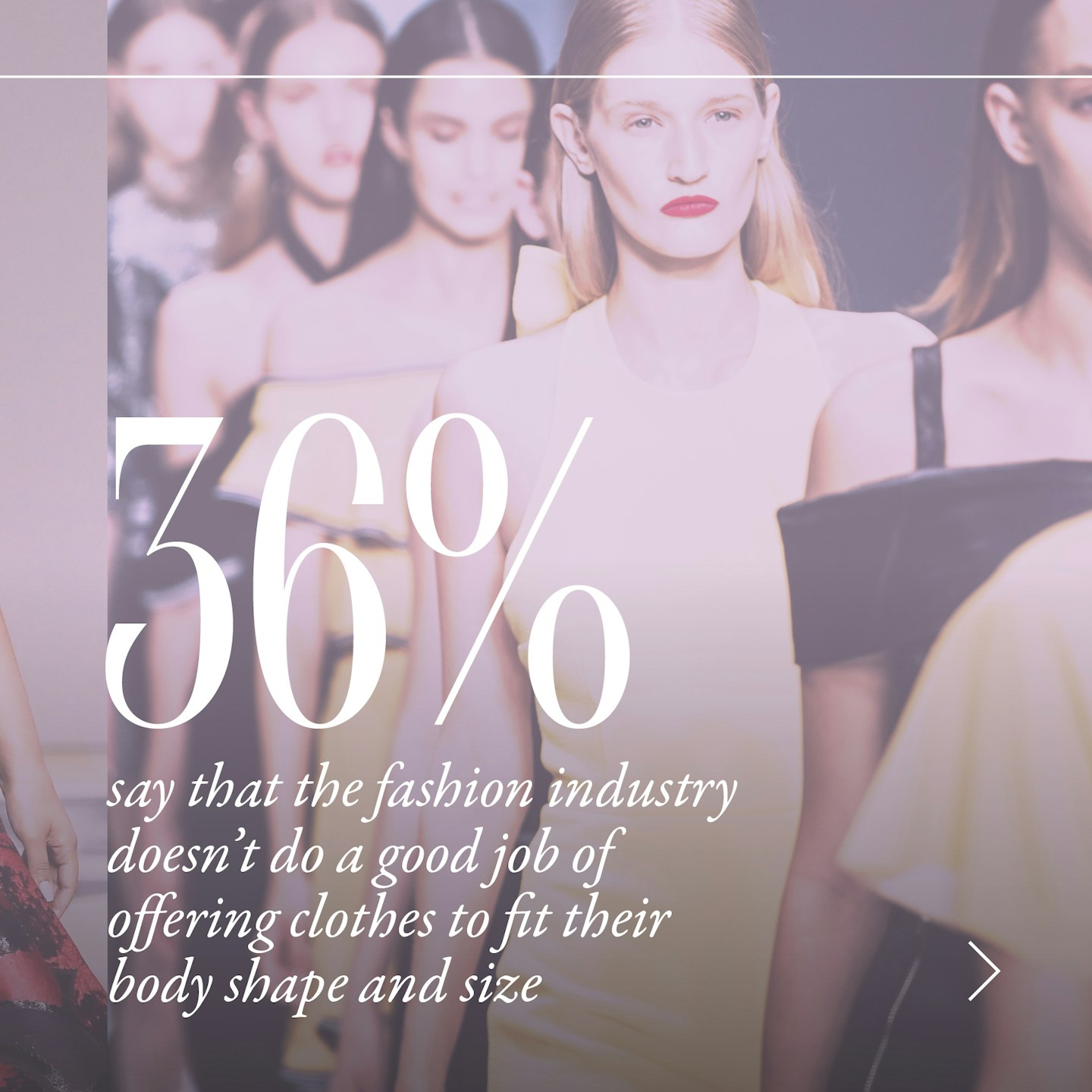 2 of 9
2 of 9Grazia size survey
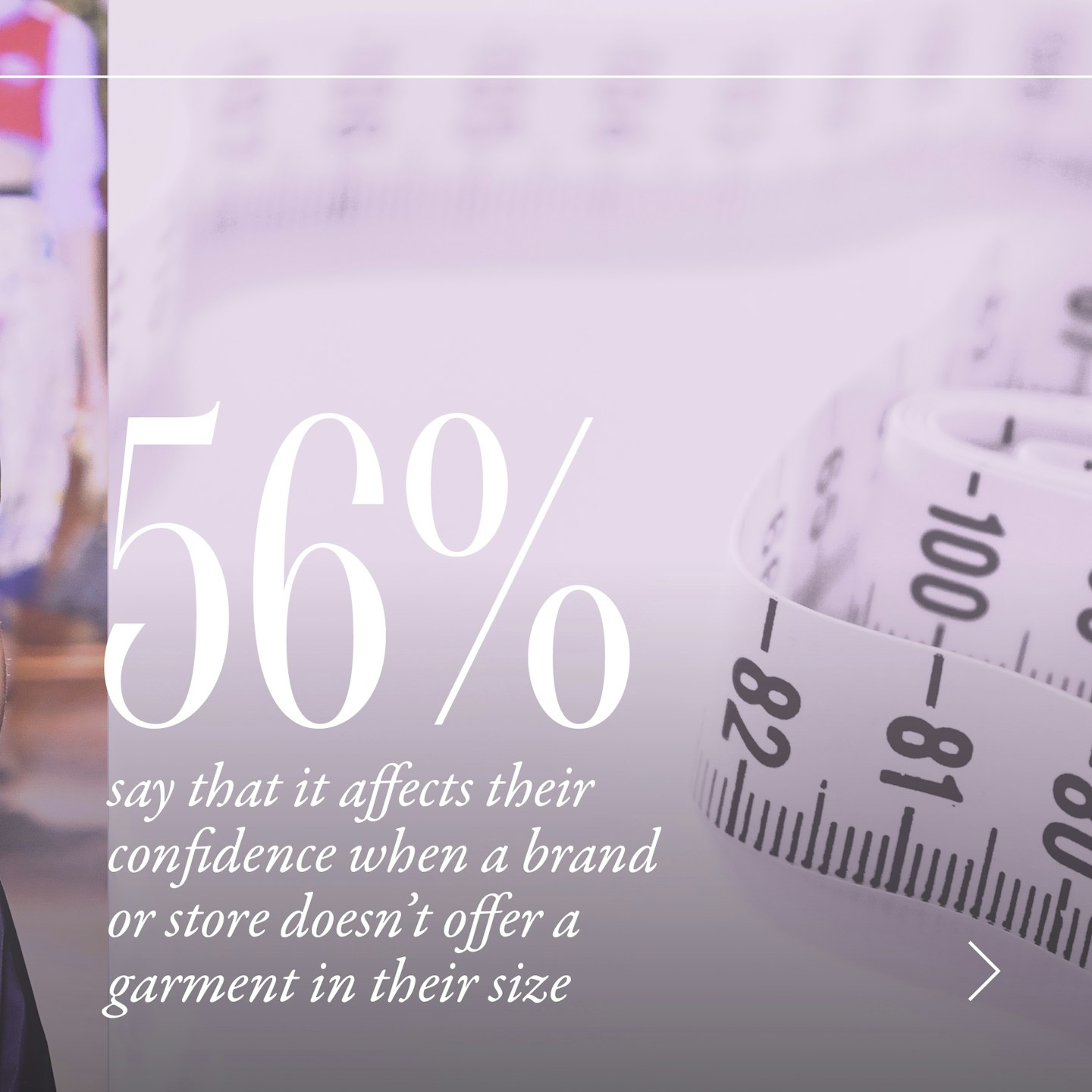 3 of 9
3 of 9Grazia size survey
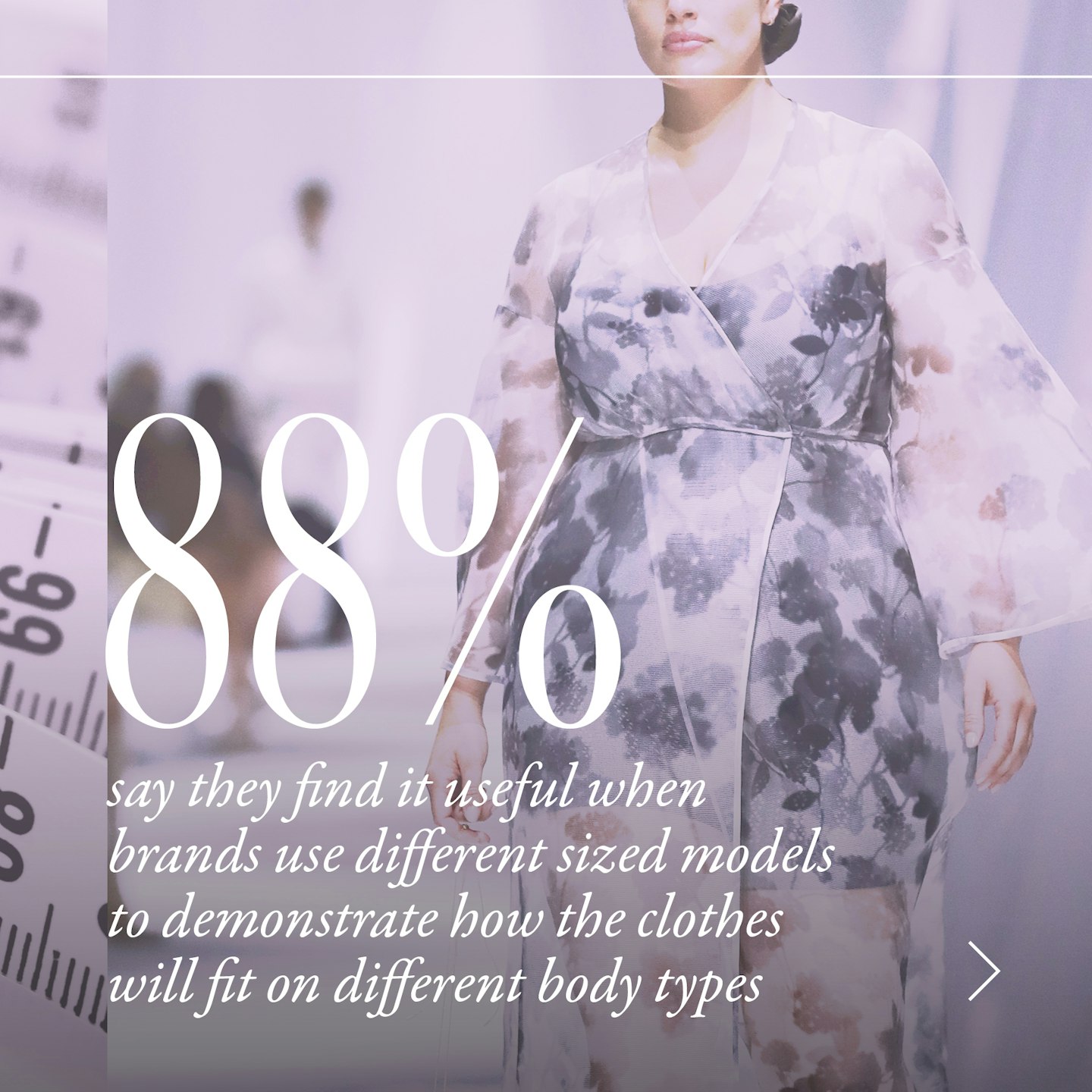 4 of 9
4 of 9Grazia size survey
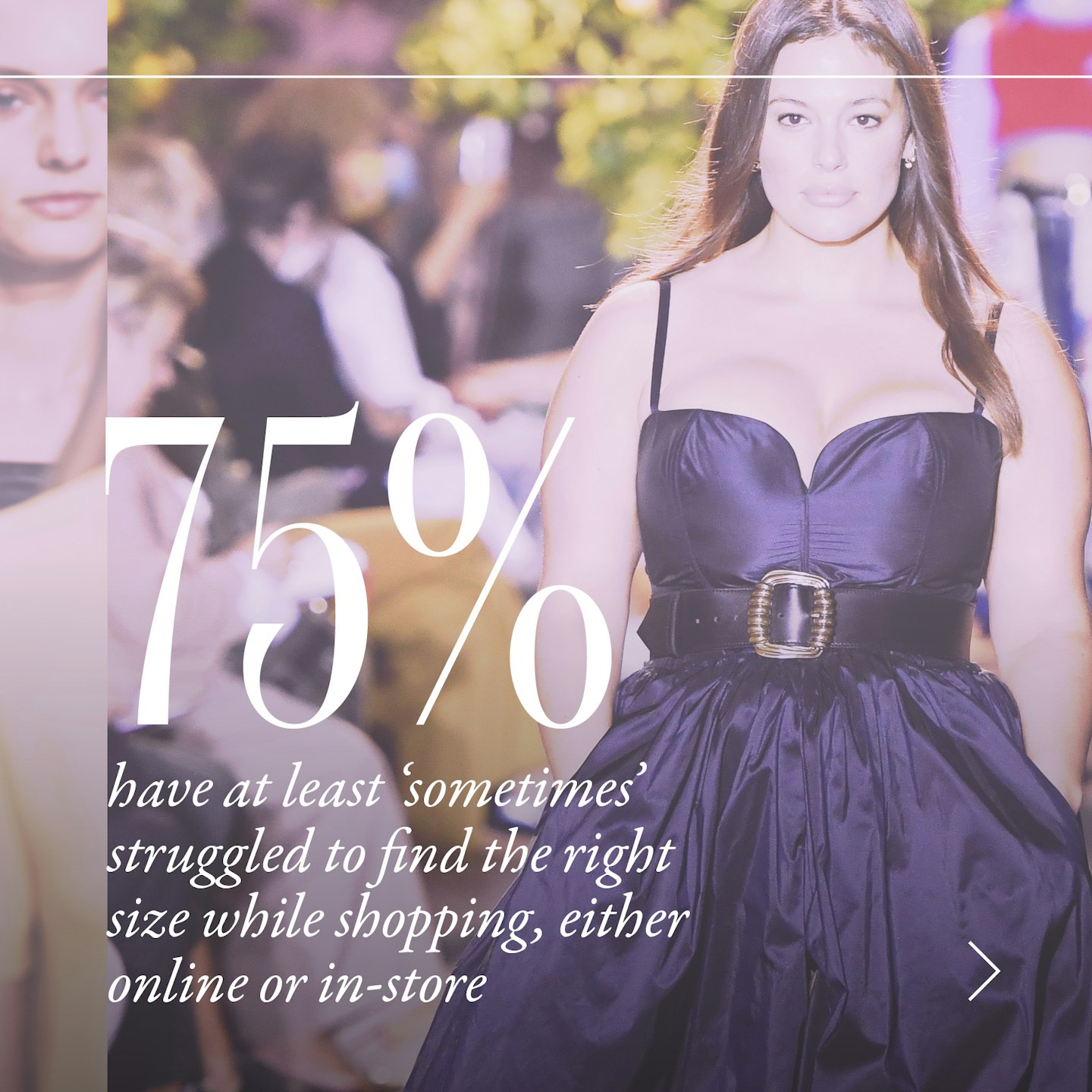 5 of 9
5 of 9Grazia size survey
 6 of 9
6 of 9Grazia size survey
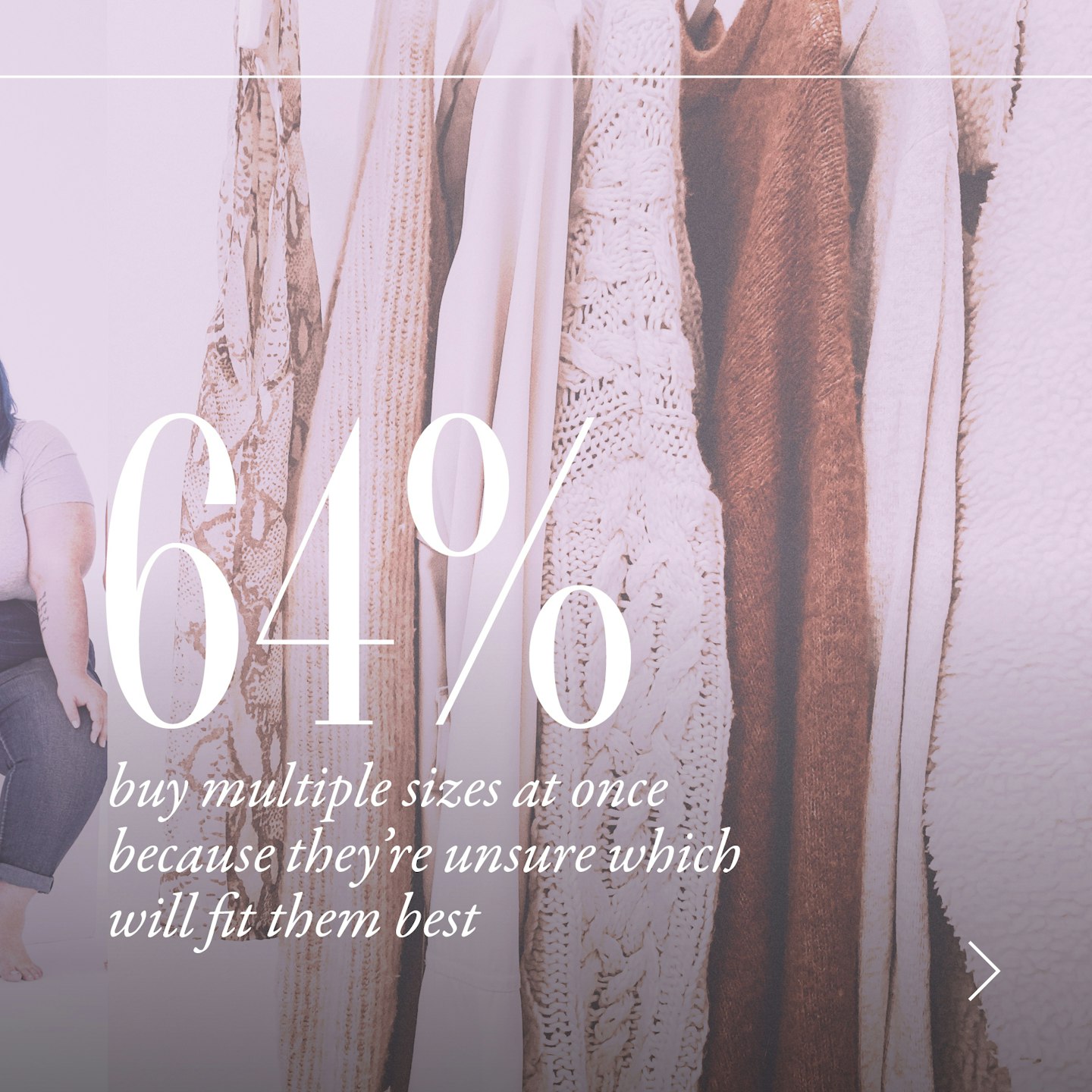 7 of 9
7 of 9Grazia size survey
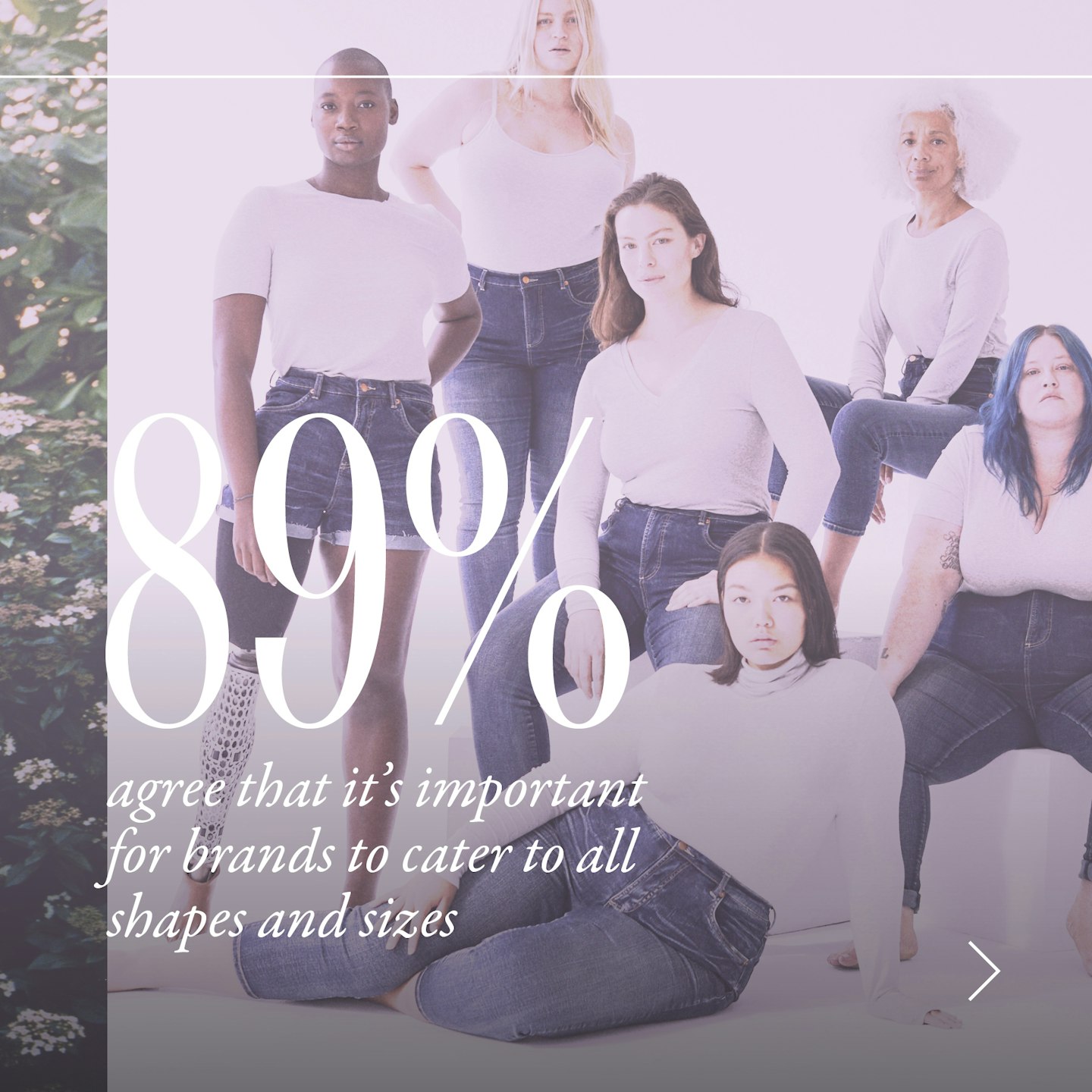 8 of 9
8 of 9Grazia size survey
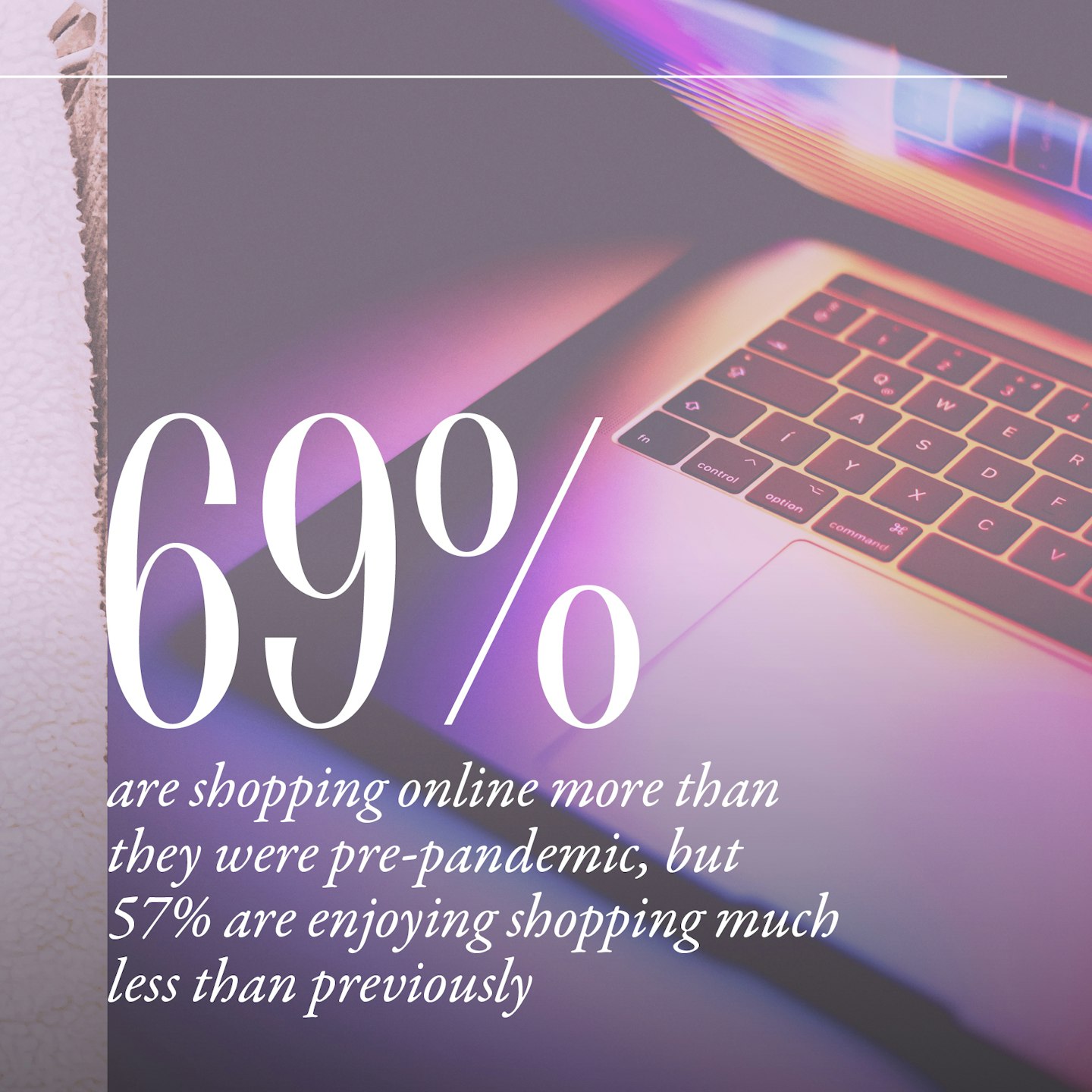 9 of 9
9 of 9